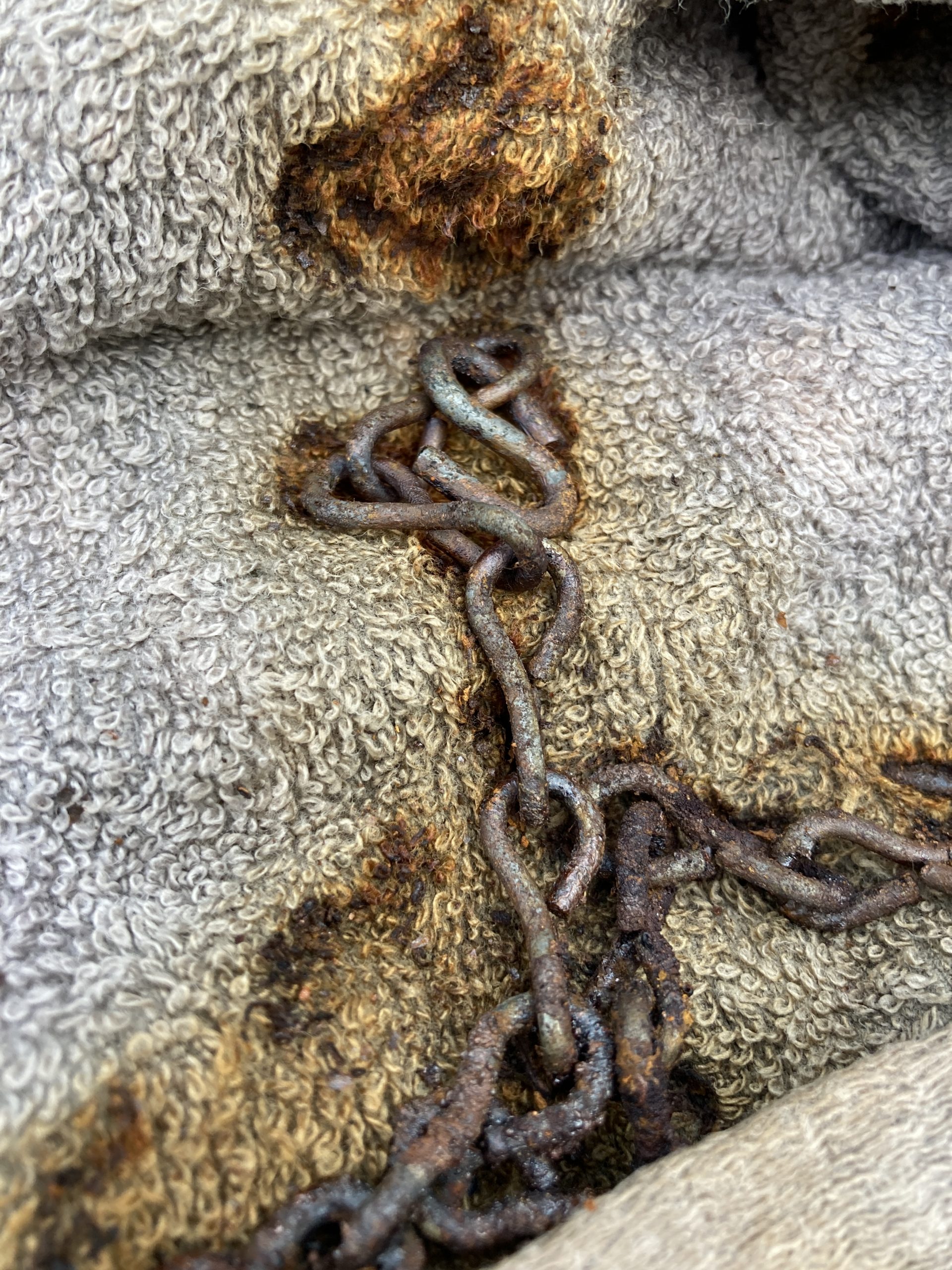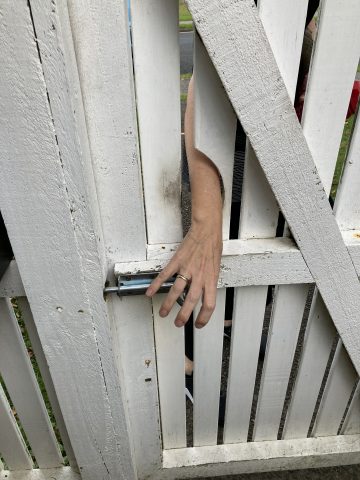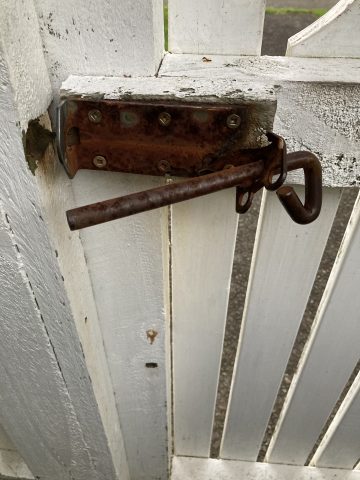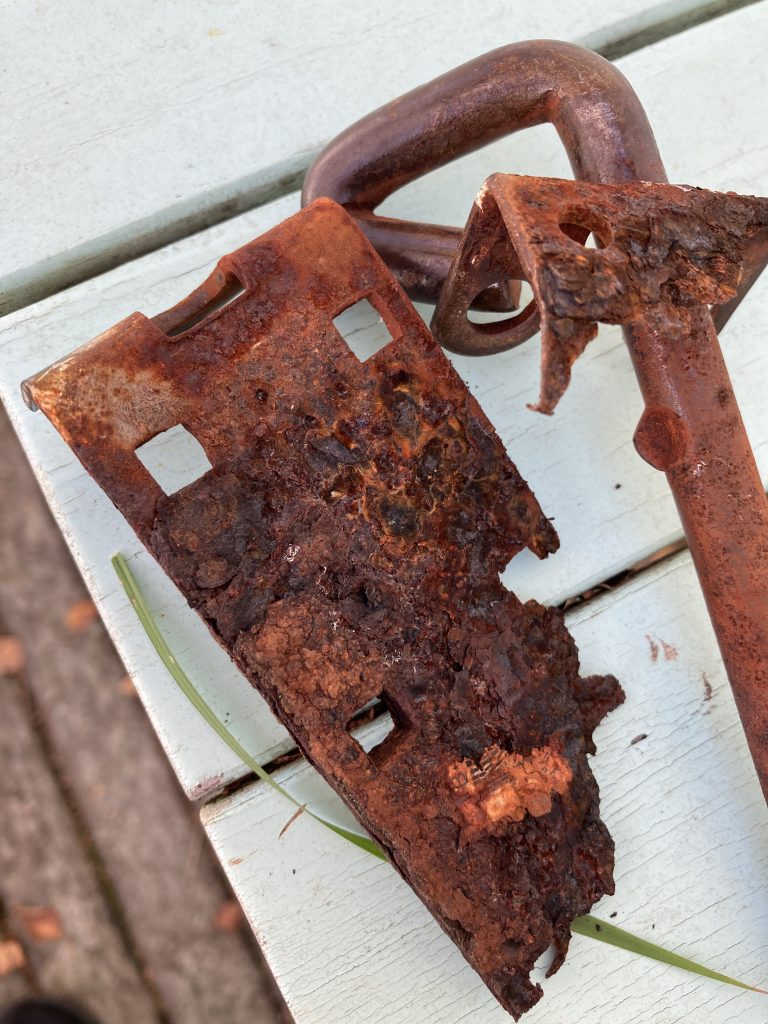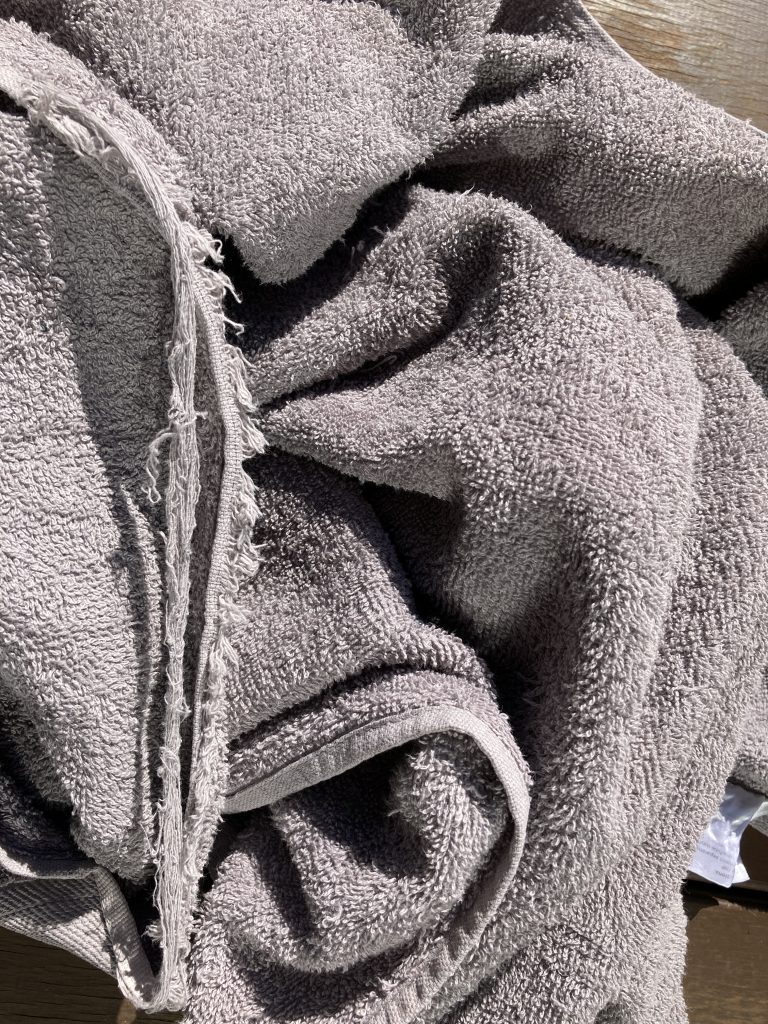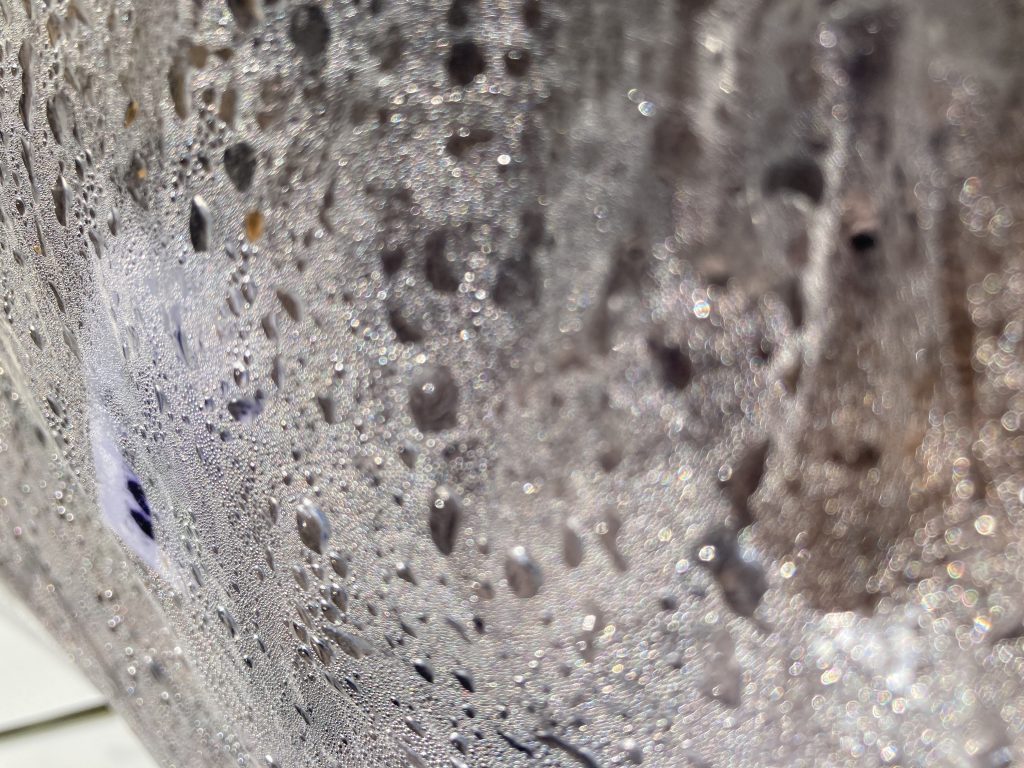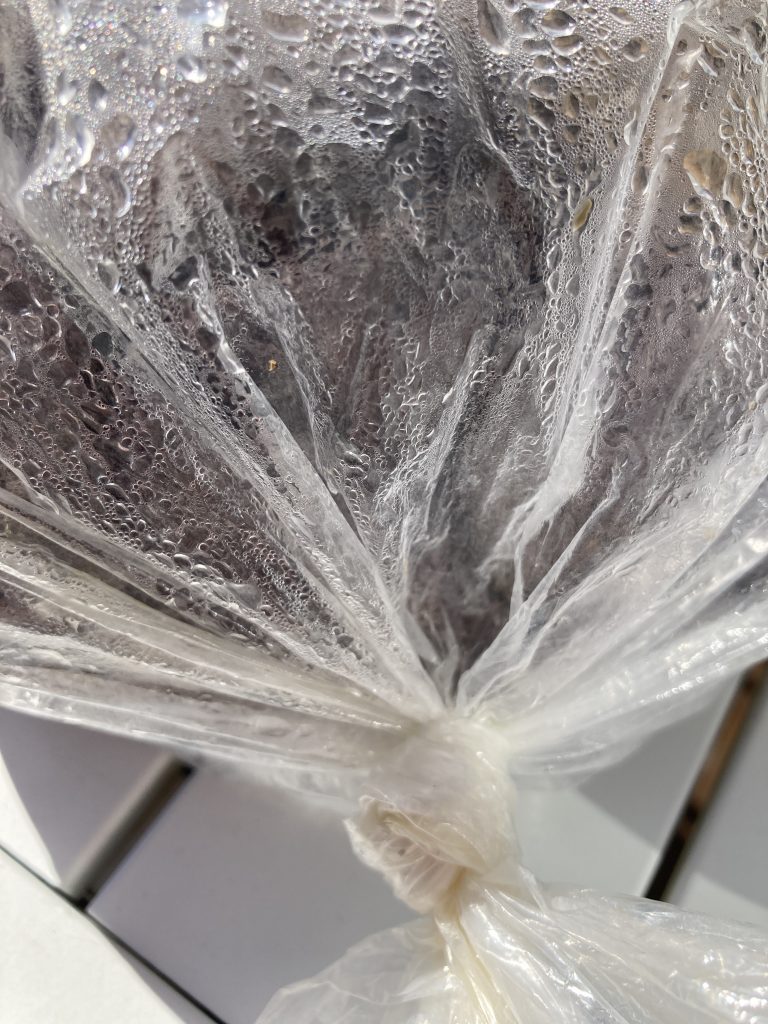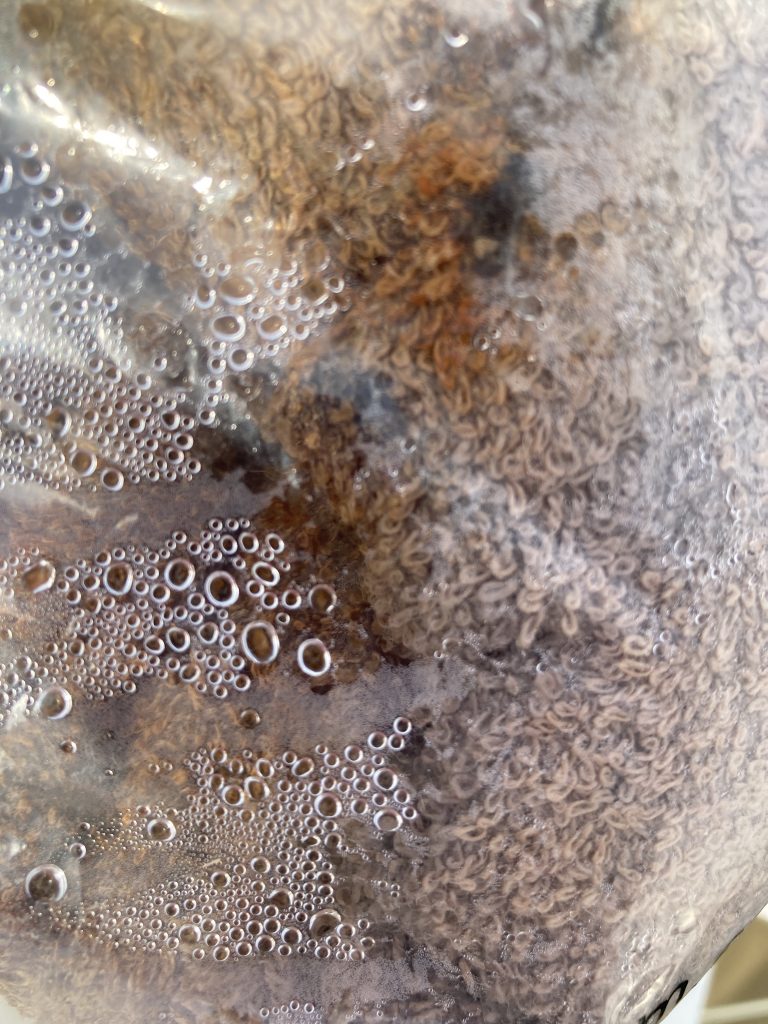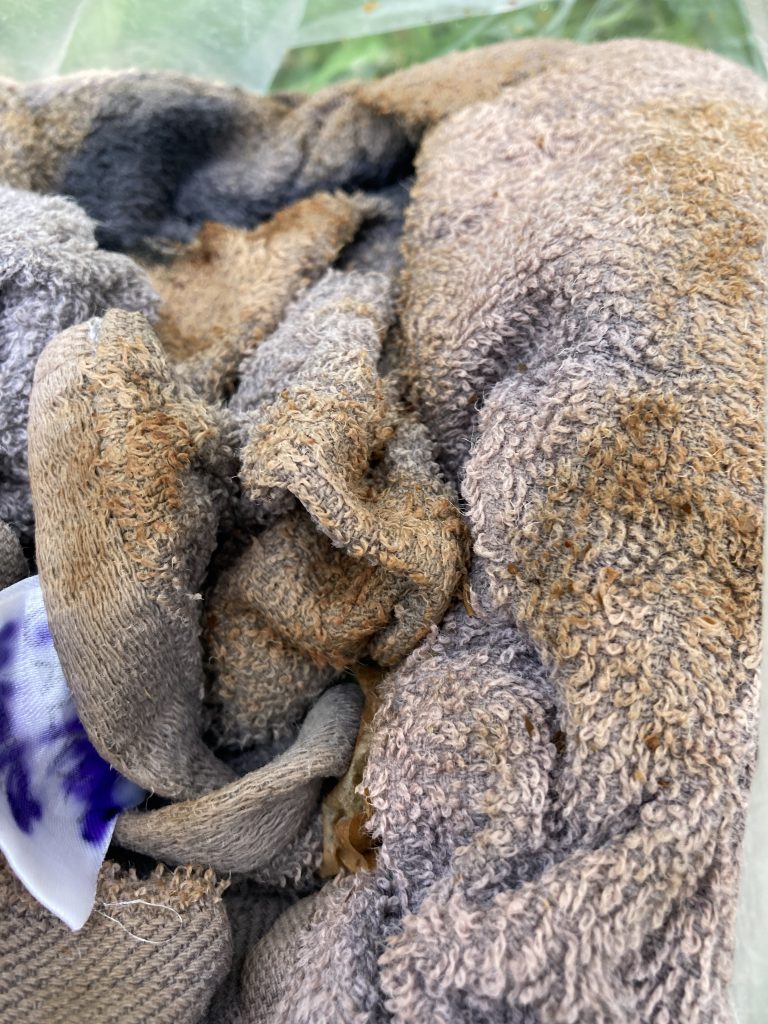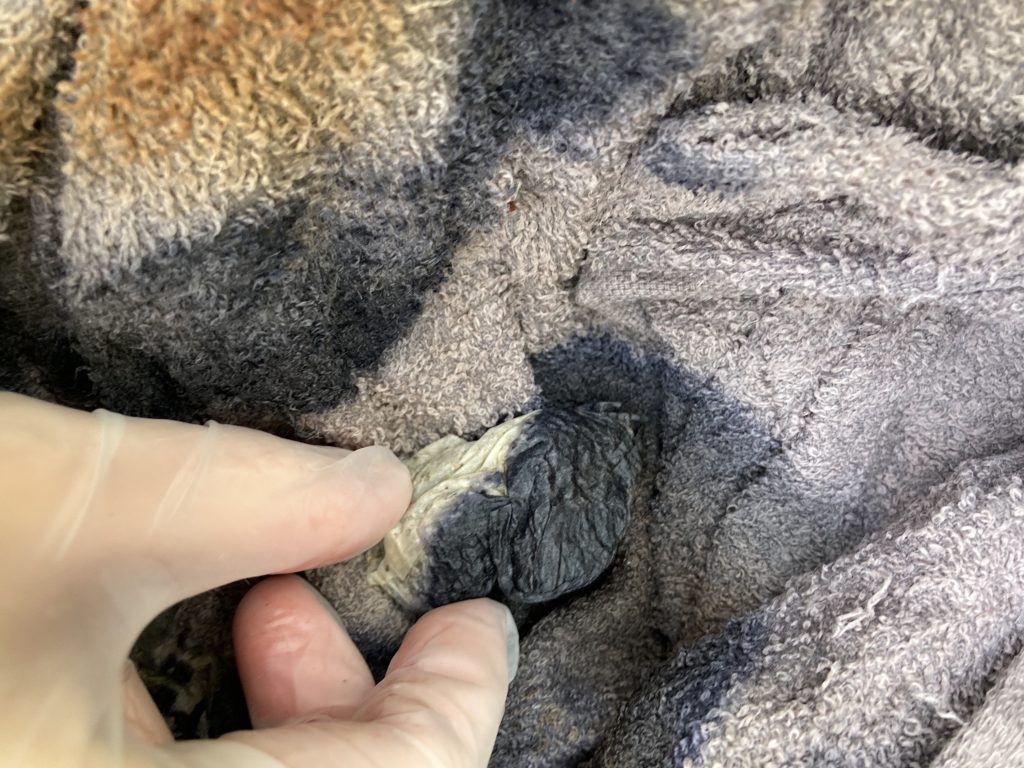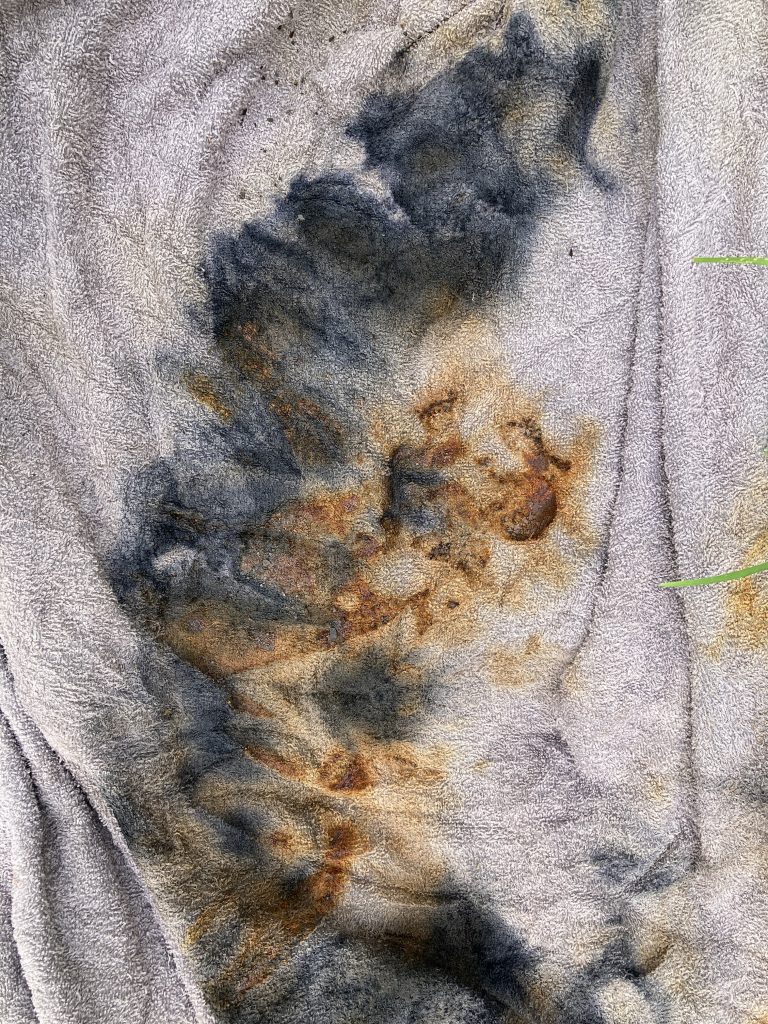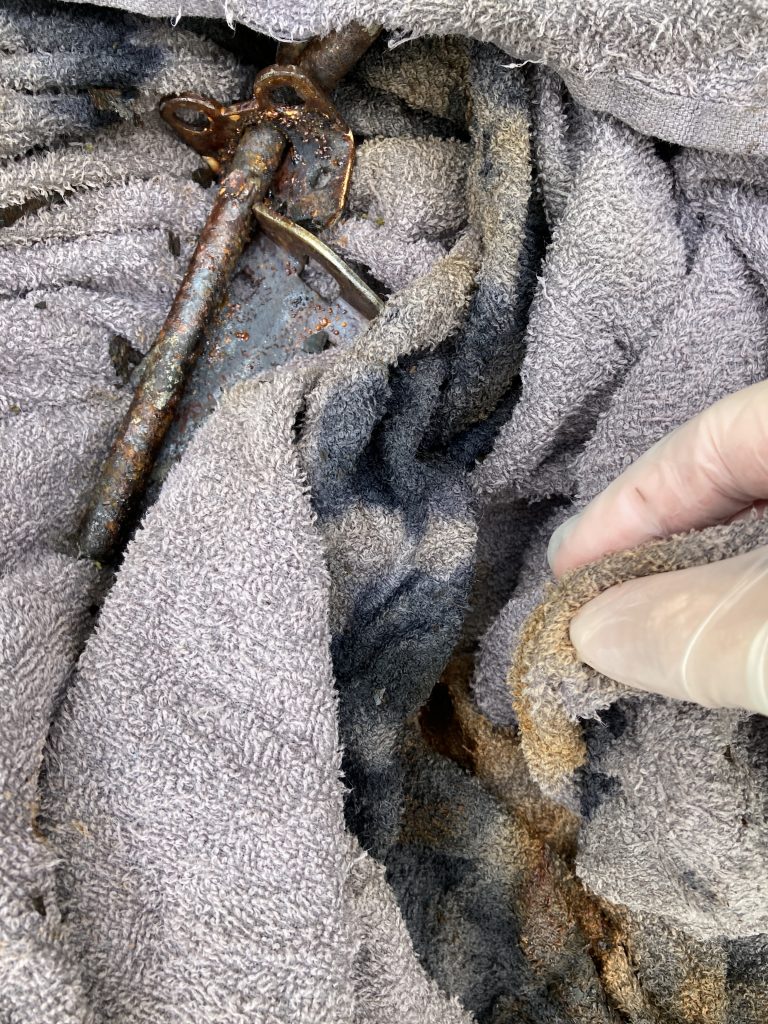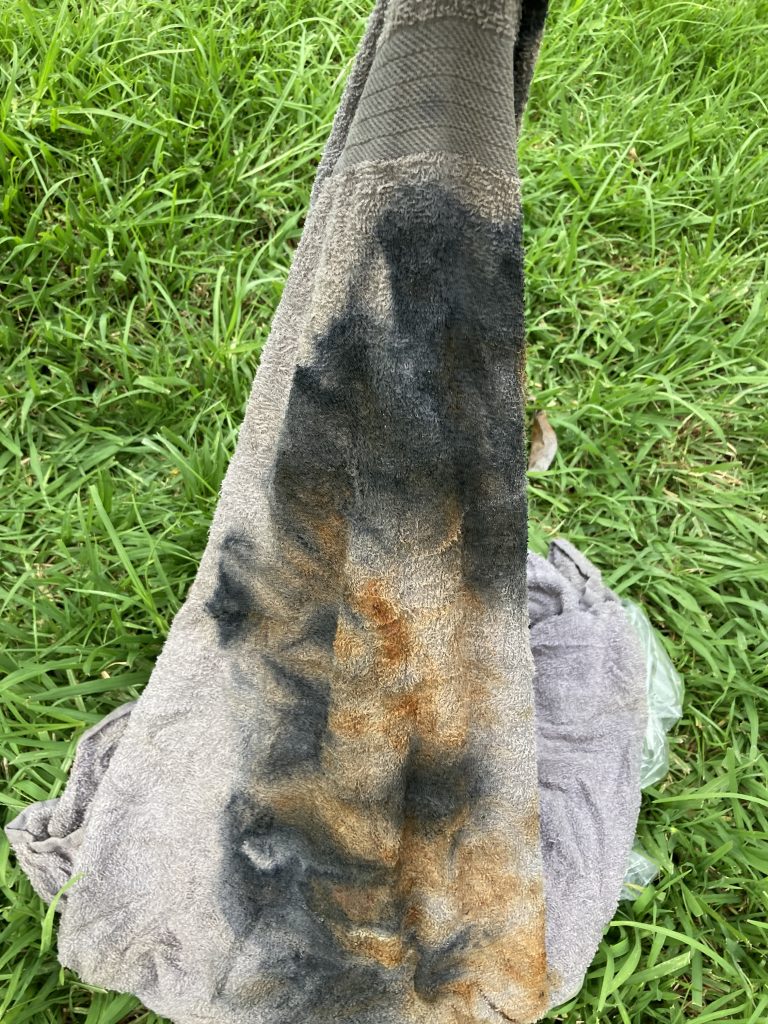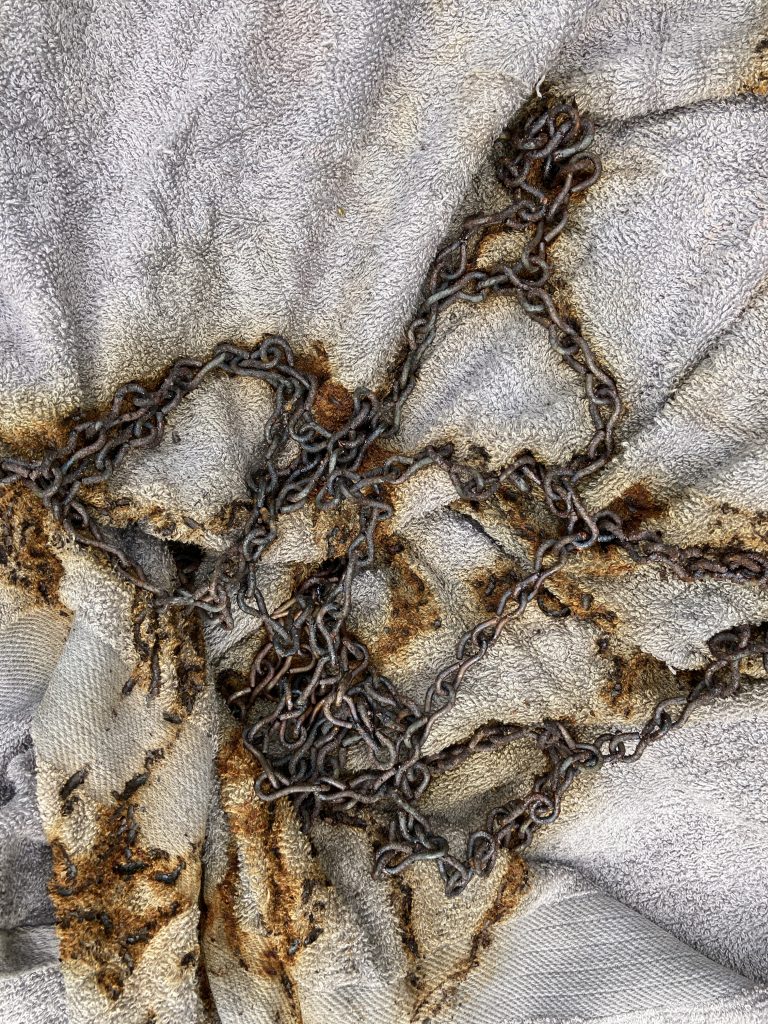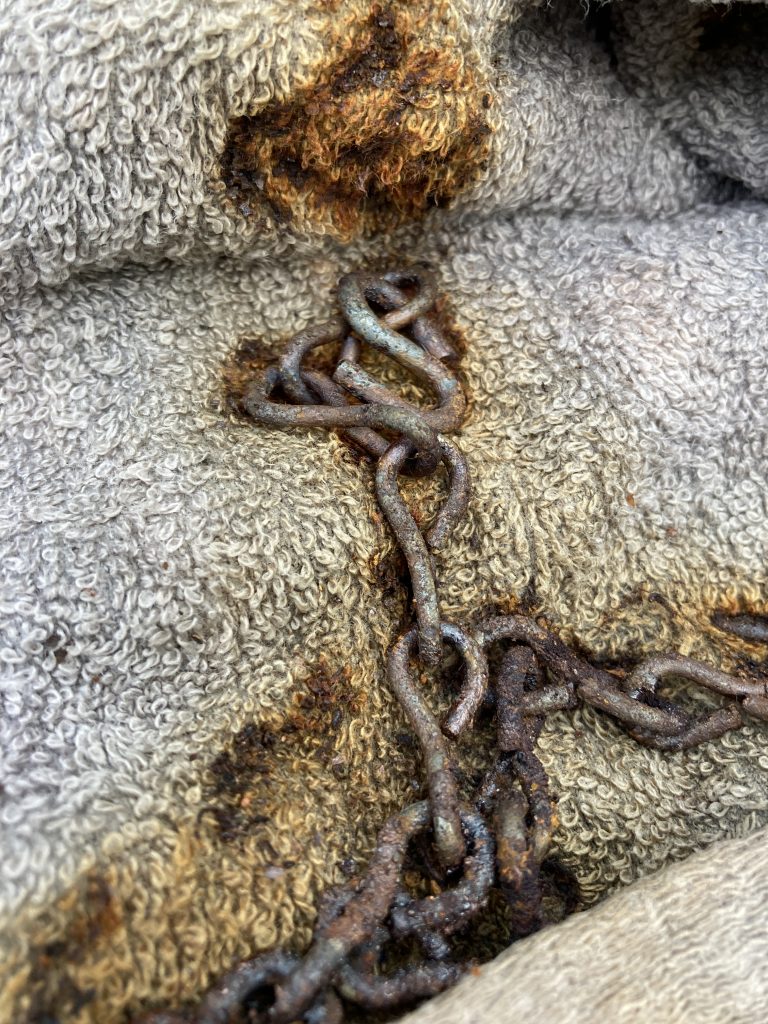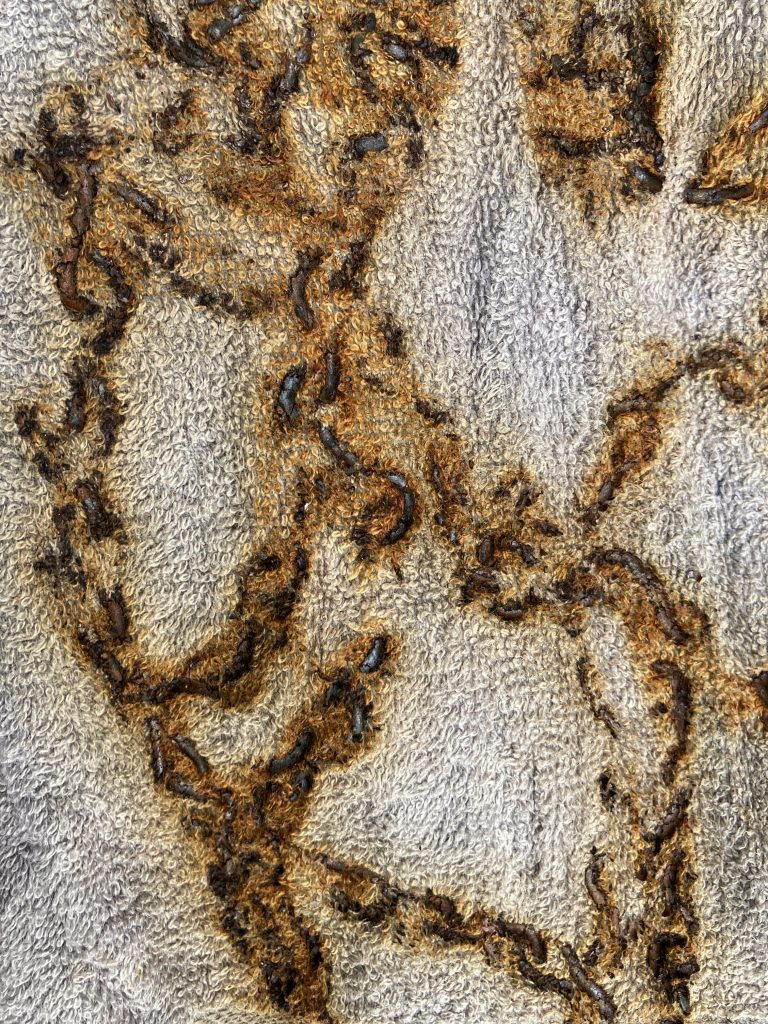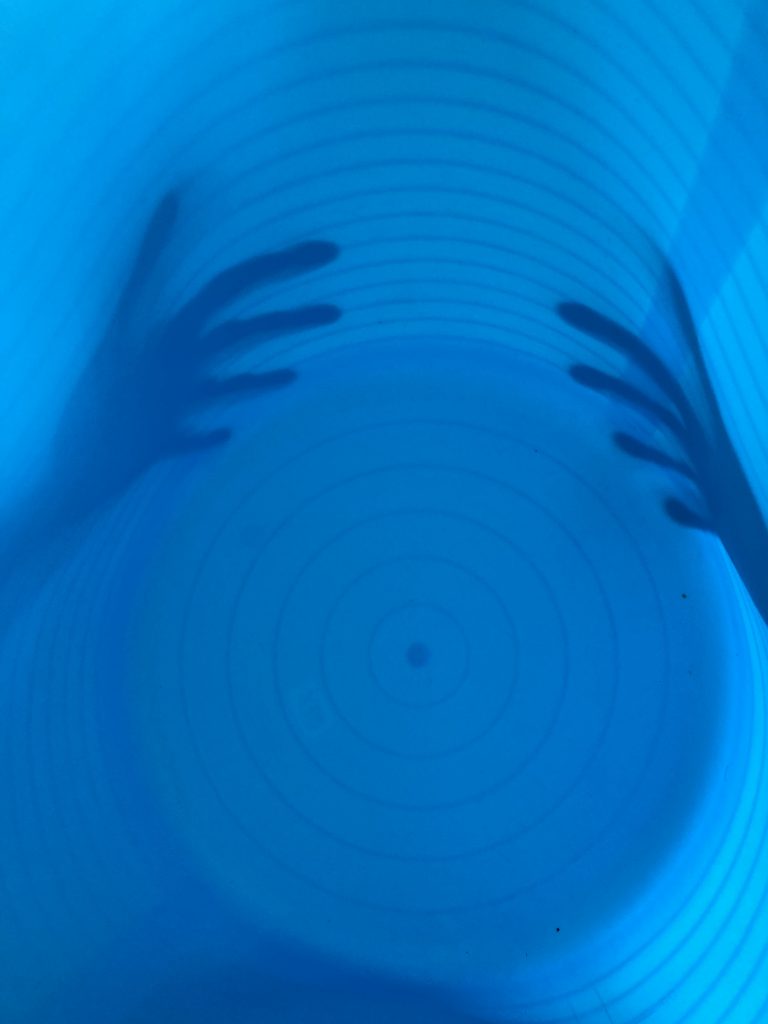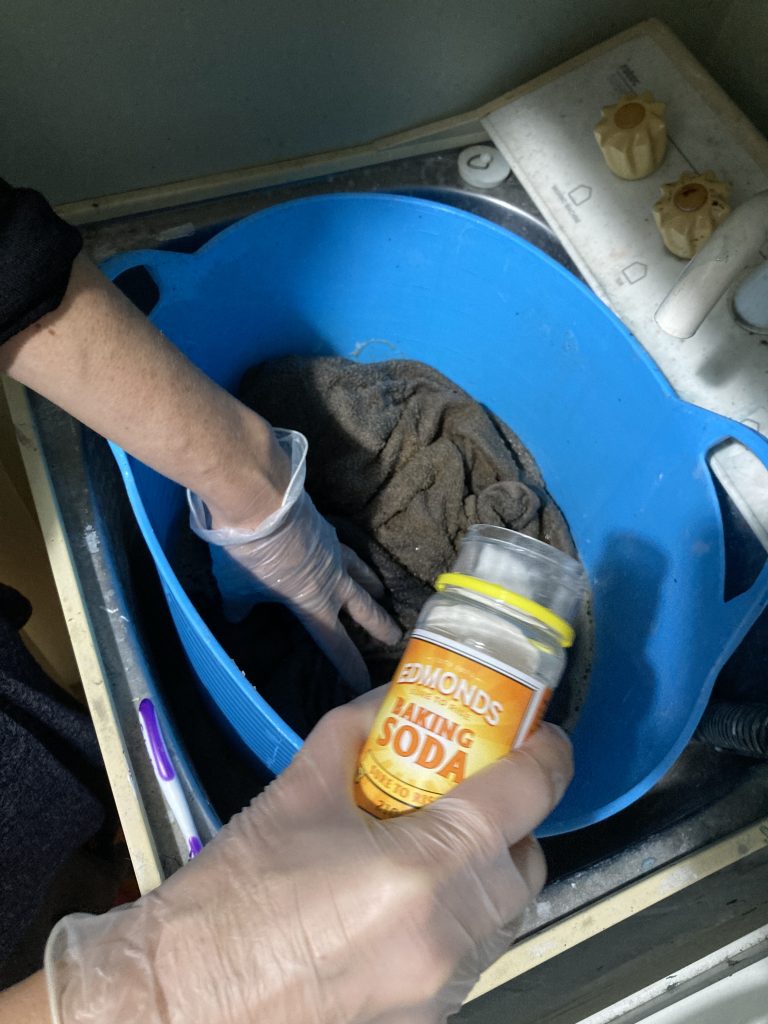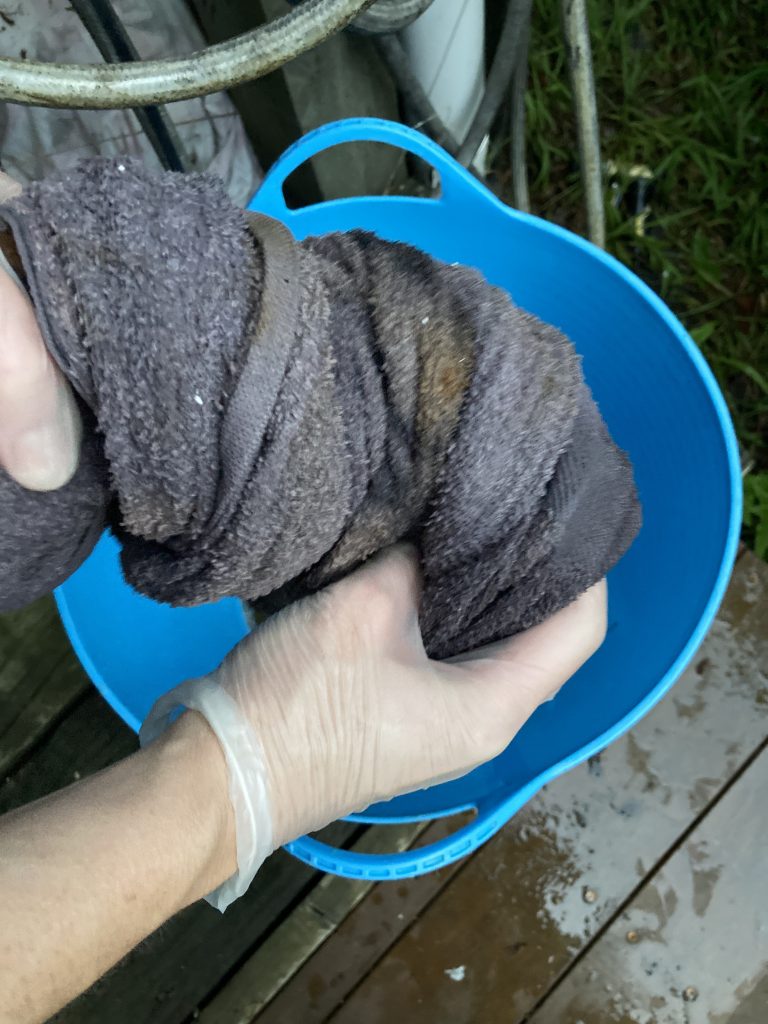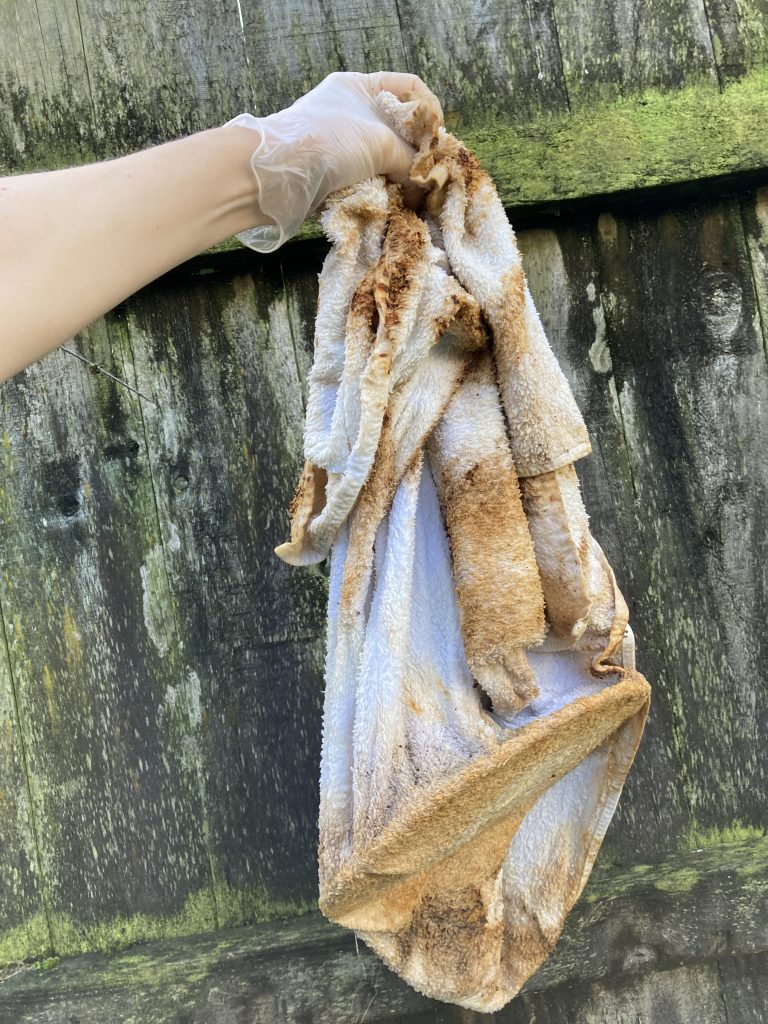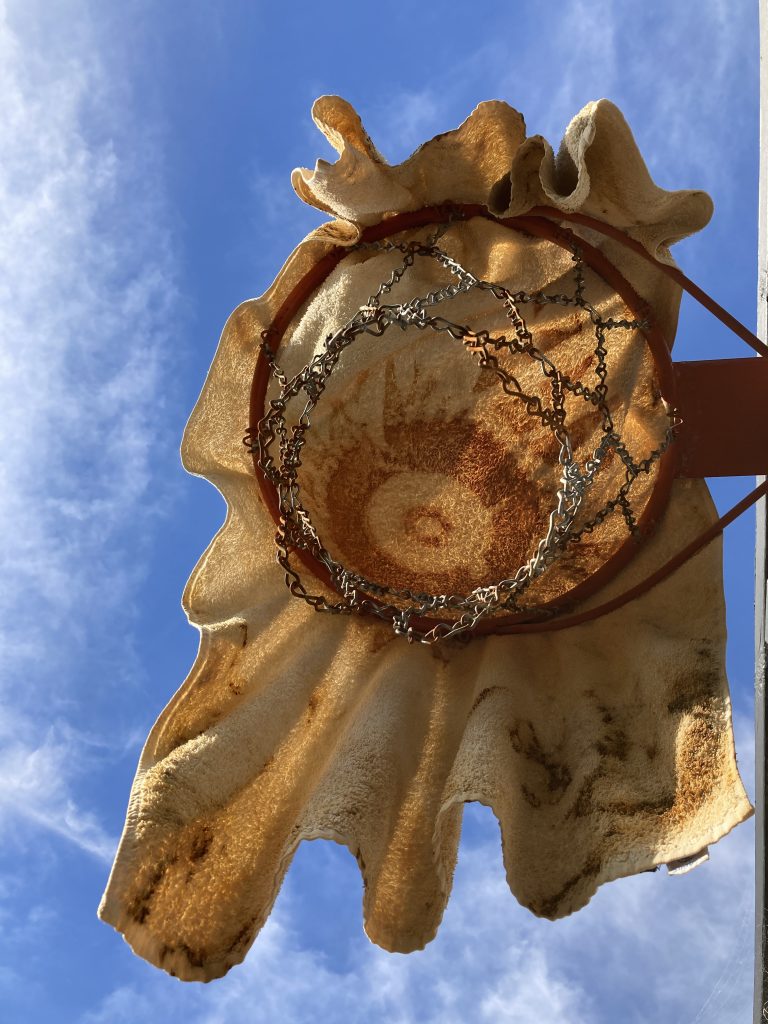I am really curious about the rusting material body, human and non-human, inside and out. Rusting as a signifier of the passing of time, and a natural consequence of exposure.
Technically rust is Hydrated Iron (III) Oxide, also known as iron oxide (Fe²O³). Rust on an iron object speaks to the physical decay of matter, from persistent exposure to natural elements of water and air. Social reformer and art critic John Ruskin warns not to dismiss rusted iron as spoiled. There is a living form of oxidation in sand and clay that is naturally occurring around us. Ruskin says, oxidised iron gives earth its vibrant colour, and alludes to the possibility that iron is responsible for the crimson hue of blood itself. [1]
This makes me think about the work of iron in the blood, and for women, when blood is lost every month during menstruation, the iron within those red blood cells is also lost. It’s interesting to note that too much or too little iron in the blood can cause similar symptoms, of lethargy. Too much iron from supplements or gene mutations such as hemochromatosis, which cause the body to absorb too much iron from food, literally rust the body’s internal organs. [2] Some people call it the Celtic Curse, others the viking gene. As I have hereditary hemochromatosis in my family this is an interesting area of research for me.
Stimulated by the natural occurrences in my home and surrounding environment, I am drawn to use the front gate lock, which rusted off its hinges this same week! My gate lock as object, carries fourteen years of functional use. It holds trace of human interaction, of wear and tear, of continual repetitive action. It has provided access from the street to my home, securing the boundary, it says no, and yes, and no, over and over. The rusting gate bolt carries the sweat, oil and skin patterns of my family members, of couriers, door-to-door sales people, neighbours and friends, of the gutter cleaners, and sticky-fingered children at Halloween. Corrosion ate through its steely face, lifted it off its wooden support and tore the bolt from its metal threads.
I seemed not to notice the rust until the lock as object ceased to function. I became really curious about this living surface, changing and reacting to its environment. The reddish-brown decay reminded me of burnt hokey pokey and the clay of the cliff-face a bit further down the road. It was beautiful.
I wondered, how the rusting article might interact with a cotton towel, what activators I might need to use to draw out the rust, and if this process might document some sort of trace of human and non human interaction. I also wondered how this interplay between soft and hard material, sourced from my home, might speak of my experience as a middle-aged woman living in suburbia?
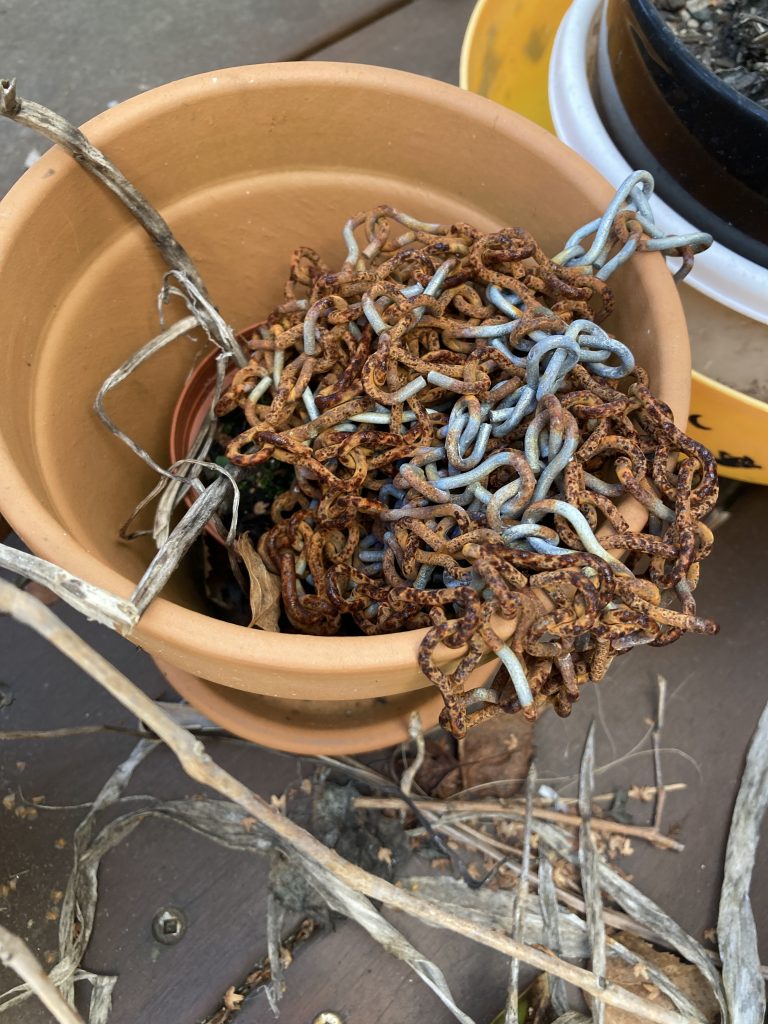
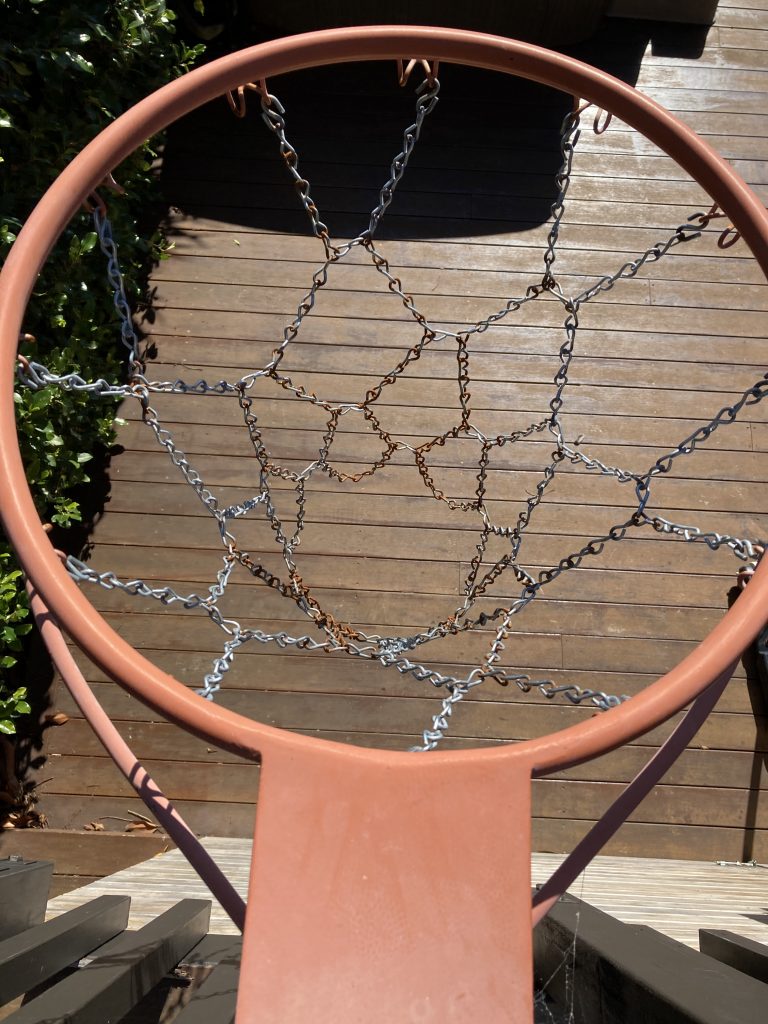
The chain hangs like little upside-down bodies 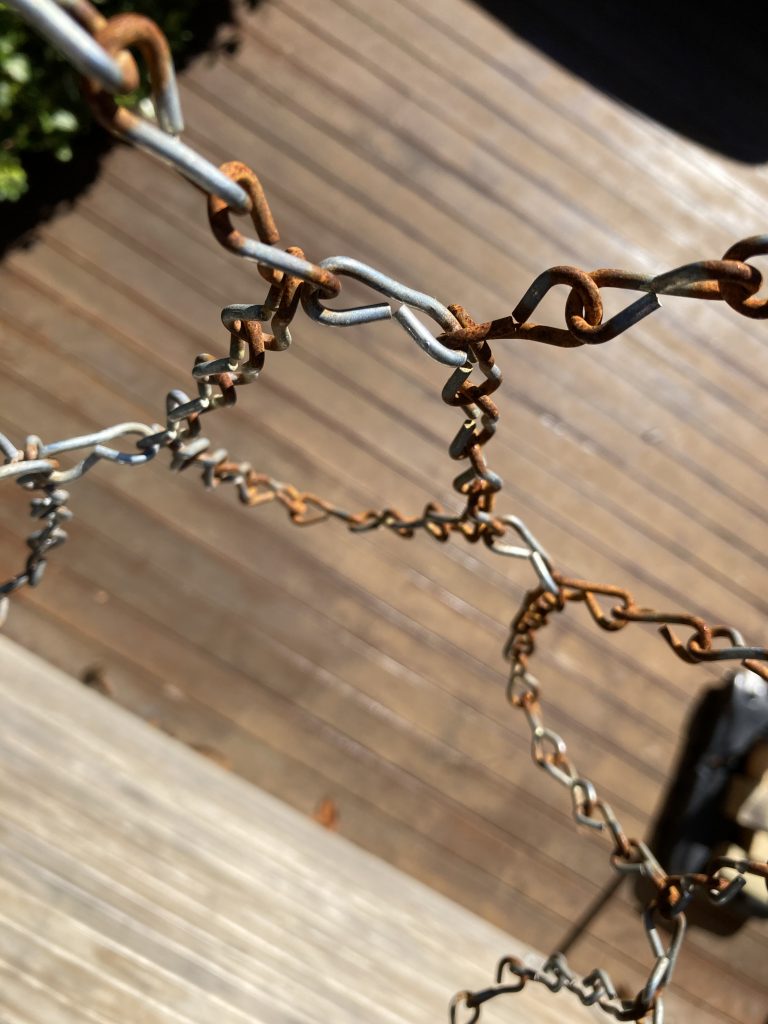
I also found an old rusting basketball chain, nestled in a terracotta pot in the corner of the deck and decided to process this too. I was really drawn to the DNA-like links that still clung tight, even though there was rusting.
The method: I wrapped the rusting object in a towel, activate with water, apple cider vinegar (found in the bottom kitchen drawer). I also added green tea to the rusting gate lock, as I was curious about how the tannins might influence the process, and wanted to bring in some warmth of the indoors to this somewhat scientific process. When it came to processing the rusting chain, I was out of green tea, and so used up the remains of the apple cider vinegar, added water and bundled the net into a separate bag. I then sat both of the bundles in the sun. I brought the packages inside overnight and continued this in and out process for a week.
The rusting gate lock
The rusting chain
When I finally unbundled the process, I was mesmerised. The towel became the carrier — a bit like me with my hemochromatosis gene.
A gentle washing process followed, which removed any metal filings and made the towel safe to handle.
Rusting circular saw bit, meets white hotel towel – drying in the sun
- Jo Marchant, “Not Just Any Old Iron” The Guardian, 2011. Retrieved from: https://www.theguardian.com/science/2011/apr/28/wellcome-science-writing-prize
- Bill Bryson, “The Body”, 271. Leo Zacharski of Dartmouth Hitchcock Medical Centre in New Hampshire told New Scientist in 2014.
